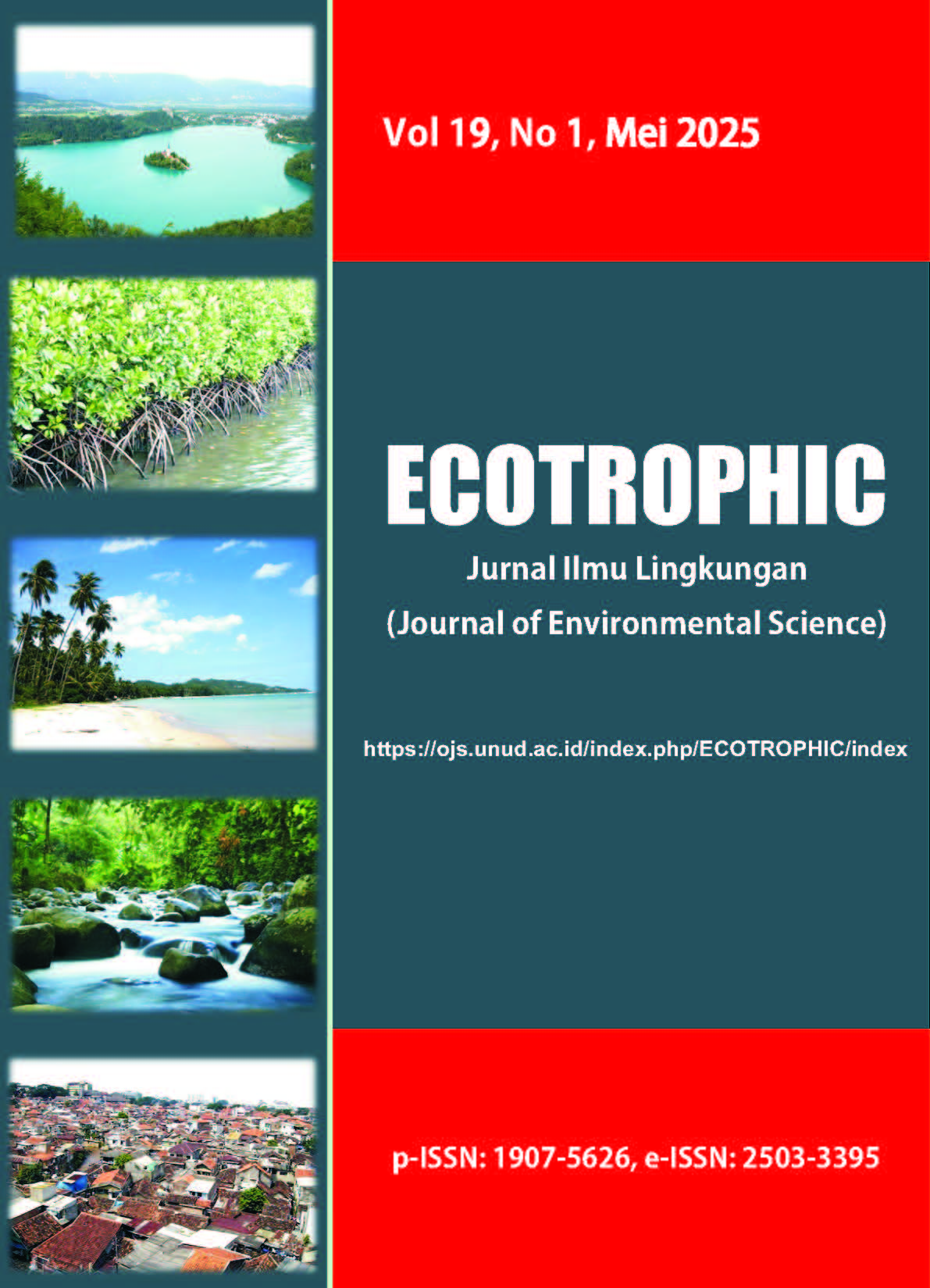ESTIMASI SIMPANAN KARBON PADANG LAMUN DI PANTAI NYANG-NYANG, BALI
DOI:
https://doi.org/10.24843/EJES.2025.v19.i01.p05Keywords:
Density; Biomass; Seagrass cover; SubstrateAbstract
This research aims to determine the ecological condition of seagrass and the estimated value of carbon storage in the upper and lower substrates. This research uses quantitative descriptive methods to examine an object based on data obtained in the field. The observation points were determined using purposive sampling which refers to the presence of seagrass which can represent or describe the condition of seagrass in the Nyang-Nyang Beach area. The sampling method uses a purposive sampling method, divided into 3 stations where the sampling technique for each station can represent the research area as a whole, thereby minimizing bias in the data obtained. At each station a 100 meter transect line was drawn perpendicular to the sea. Environmental parameters were collected using a thermometer for temperature data, a refractometer for salinity data and a pH meter for pH data at Nyang-Nyang Beach. Processing of biomass samples is divided into two parts, namely the upper substrate and the lower substrate, which are then dried using an oven at a temperature of 60 degrees Celsius for 24 hours, while for processing carbon samples using the ashing method where dried seagrass samples are burned in an electric furnace at a temperature of 450 degrees Celsius for 4 hours until it turns to ash. The only types ofseagrass observed were the dominant ones, namely Thalassia hemprichii, Halodule uninervis, and Thalassodendron ciliatum. The average amount of seagrass cover is 15.66% with poor conditions. The average density is 392.18 with slightly dense conditions. The estimated total carbon storage in the lower substrate is 1.06 tonnes of carbon per entire area, while for the upper substrate it is 0.97 tonnes per entire area. The total carbon storage in the Nyang-Nyang Beach area is 2.03 tons of carbon with a total area of 240,000 m².

